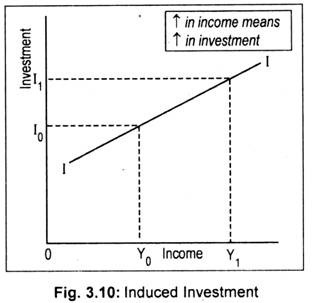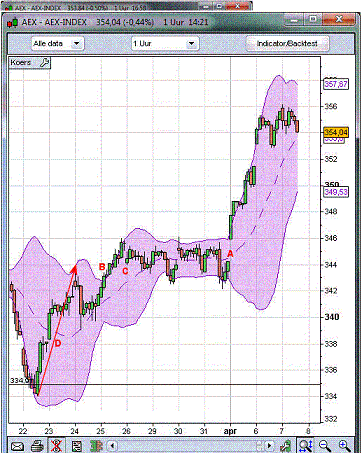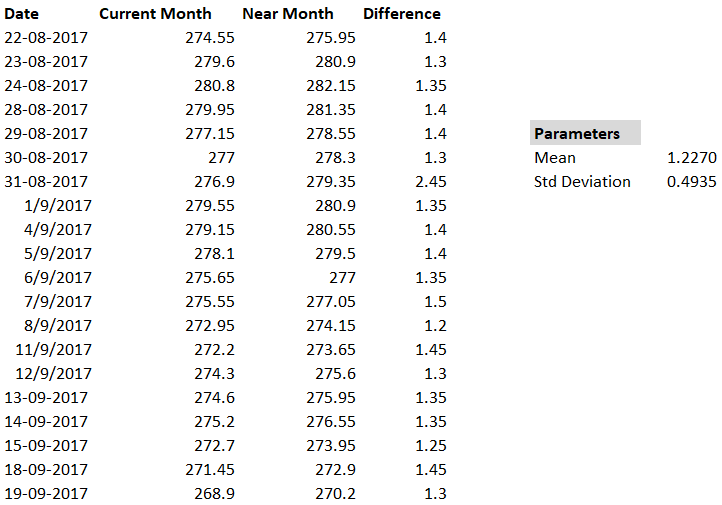Read about : What is Average Collection Period and how is it calculated? online on Chew Central Pet Food, Toys & Supplies
Contents:


Similar to the debt to equity ratio, this ratio determines the proportion of debt to that of the assets of a company. It is a leverage ratio that gives you information on the percentage of assets of a company that are financed through debt. It is also helpful in determining the credit policy of the organisation. The management can decide to provide a short period of credit to its customers to improve the organisation’s liquidity.
New Yorkers in Need: Food Insecurity and Nutritional Assistance … — osc.state.ny.us
New Yorkers in Need: Food Insecurity and Nutritional Assistance ….
Posted: Wed, 01 Mar 2023 08:00:00 GMT [source]
Stocks with a PEG ratio of less than 1 are considered undervalued relative to their EPS growth rates, whereas those with ratios of more than 1 are considered overvalued. A company with a lower PE ratio is considered undervalued compared to another company in the same sector with a higher PE ratio. Angel One has created short courses to cover theoretical concepts on investing and trading. These are by no means indicative of or attempt to predict price movement in markets.
The average collection period is the average number of days between 1) the dates that credit sales were made, and 2) the dates that the money was received/collected from the customers. Having a higher average collection period is an indicator of a few possible problems for your company. From a logistic standpoint, it may mean that your business needs better communication with customers regarding their debts and your expectations of payment. The common collection interval is the period of time it takes for a enterprise to receive funds owed by its purchasers when it comes to accounts receivable . The Receivable Turnover Ratio, also referred to as the Debtor’s Turnover Ratio is an accounting metric used to determine a company’s effectiveness in extending credit and collecting debts.
The average accounts receivable balance equals the sum of the AR balances at the start and end of the month divided by two. This computation should be simple enough to complete on a small portable calculator. The average assortment period is the amount of time it takes for a business to receive funds owed by its shoppers when it comes to accounts receivable . Companies calculate the common assortment interval to ensure they have enough cash available to satisfy their monetary obligations. In other words, this monetary ratio is the common variety of days required to convert receivables into money.
Average Collection Period Formula
If an average ratio of a specific industry, say manufacturing is 10, a company that belongs to that business segment must have that ratio. However, it could be as low as 5 for another industry, and still can be considered as a high AR for that sepcific segment. Ratio analysis refers to the systematic use of ratios to interpret the financial statements in terms of the operating performance and financial position of a firm. It involves comparison for a meaningful interpretation of the financial statements.
Companies calculate the average collection period to ensure they have enough cash on hand to meet their financial obligations. 15 to 30 days should be the average collection period for accounts receivable. If you are having trouble paying your bills, it’s essential to look for ways to improve cash flow. This includes analyzing your collection periods for optimization so that you get paid after providing goods or services. In some years, the company will have more time to collect on that debt, and in other years it might be less. The debtor days ratio calculation is completed by dividing the common accounts receivable by the annual whole gross sales and multiplied by 365 days.
Multi-omics microsampling for the profiling of lifestyle-associated … — Nature.com
Multi-omics microsampling for the profiling of lifestyle-associated ….
Posted: Thu, 19 Jan 2023 08:00:00 GMT [source]
Nevertheless, there are a number of financial ratios that have made the life of investors very simple. Now, you do not need to make a number of calculations and you can just use these financial ratios to understand the gist. While customer retention is important, if a customer is constantly paying you late despite repeated reminders and penalties, you may have to re-evaluate your business ties with them. Say, if your average DSO is 38 days and your customer pays after 55 days, it’s time to let them go.
How do you calculate average collection period?
However, if they pay their vendors just 4 days sooner, then they would be eligible for a 10% discount on their parts and materials. This period can be calculated by dividing the average accounts balance that is receivable by the total net credit sales for the time. And then, the result is multiplied by the number of days counted in the period.

The average collection period formula period for a selected invoice isn’t a calculation, but somewhat is simply the amount of time between the sale and the cost of the bill. Calculating the average assortment period for a section of time, similar to a month or a 12 months, requires first discovering the receivable turnover, or RT. To find the RT, divide the whole of credit gross sales by the accounts receivable, which are the sales that haven’t but been paid for. Now calculate the common collection period by dividing the times within the relevant accounting period by the RT.
Store your customers’ credit card details
Here, you can find book value per share by dividing the book value by the number of outstanding shares. As a thumb rule, a company with a lower P/B ratio is undervalued compared to the companies with a higher P/B ratio. These ratios are also called Price ratios and are used to find whether the share price is over-valued, under-valued, or reasonably valued. Valuation ratios are relative and are generally more helpful in comparing the companies in the same sector .

To address this question, a company’s Debtors turnover ratio is examined. The return on capital employed determines a company’s profitability with respect to the overall capital employed by it. From the above example, the Debtors Turnover Ratio comes out to 5.2, and the average accounts receivable are Rs. 10,00,000/-, let us calculate the average collection period for a year with 365 days. Once we have the net credit sales figure, the second part of the accounts receivable turnover formula requires the average accounts receivable.
If you lose sight of that, the accounts receivables can get out of hand anytime, leading to funds scarcity. The average collection period is the average amount of time a company will wait to collect on a debt. The average collection period formula involves dividing the number of days it takes for an account to be paid in full by 365 days, the total number of days in a year. The mathematical formulation to find out common assortment ratio is straightforward however requires collecting some monetary info first. An average assortment interval reveals the common number of days essential to convert enterprise receivables into money.
Please consider your specific investment requirements before choosing a fund, or designing a portfolio that suits your needs. Basically, this Factor is extremely essential for those businesses that are heavily dependable on Receivables for cash flow. At learning Perspectives, We see the world differently and we want you to take a deep dive into this world to understand various management concepts in a different than usual manner. 5.95 turnover for Nadidas indicates a turnover of almost 6 times a year.
A common size balance sheet shows the information about assets and liabilities, as well as information about each item as a percentage of total assets or total liabilities, as the case may be. The higher the ROE, the more efficient the company is at using the shareholders’ funds to generate profits. This ratio is expressed in percentages and can be calculated using the following formula. Most companies allow an average credit period of approximately 30 days to their customers.
The company always wants to keep its average collection period shorter. This is a beneficial situation as it would mean that the business would receive these payments earlier. In this article, we discussed the list of the most important Financial ratios for investors.
Interpretation of accounts receivable turnover ratio
For example, if the corporate’s distribution division is working poorly, it may be failing to deliver the correct items to clients in a well timed manner. As a outcome, prospects might delay paying their receivable, which might lower the company’s receivables turnover ratio. Most companies often account for the accounts receivable outstanding, sometimes weekly and infrequently month-to-month. DefinitionThe average fee period is defined as the variety of days a company takes to repay credit score purchases. However, you have to try and strike a balance as taking as long as possible to pay creditors can result in the company having more money which is good for working capital and available cash flows.
For example, these ratios won’t be of that much use if you compare the valuation ratio of a company in the automobile industry with another company in the banking sector. NCERT solutions for CBSE and other state boards is a key requirement for students. Doubtnut helps with homework, doubts and solutions to all the questions.
Businesses must be capable of handle their average assortment period so as to guarantee they function smoothly. As the average fee period increases, cash should increase as nicely, however working capital remains the same. Most companies attempt to lower the common payment period to maintain their larger suppliers pleased and probably benefit from trade discounts. The standard formula for calculating a median collection interval is the number of working days divided by the debtor receivables turnover ratio. The average collection period is used to check how long the company takes to collect the payment owed by its receivables. It is calculated by dividing the average balance of account receivable by total net credit sales and multiplying the quotient by the total number of days in the period.
- This type of credit policy can be non-beneficial for the organisation in the long run as the competitors can take advantage and attract more customers with a flexible and liberal credit policy.
- It is used to generate budget projections and preliminary balance sheet figures.
- The average collection period delineates the average number of days between the date when the sale is made and the date when the buyer pays for it.
- These ratios are also called Price ratios and are used to find whether the share price is over-valued, under-valued, or reasonably valued.
- The receivables turnover ratio measures the efficiency with which a company collects on their receivables or the credit score it had extended to its prospects.
Funds that a company requires to run its everyday operations are commonly collectively known as working capital. The working capital turnover ratio shows just how much revenue a company makes for every rupee of working capital. A high working capital turnover is favourable, since it means that a company generates more revenue per rupee of working capital. Let’s take up the balance sheet of Hindustan Unilever limited and thoroughly analyse the data using various financial ratios and numbers. This analysis will give us some much needed information on the company’s performance and standing.
Measuring entomological parameters before implementing a study … — Malaria Journal
Measuring entomological parameters before implementing a study ….
Posted: Sat, 21 Jan 2023 08:00:00 GMT [source]
There are different types of balance sheets you may come across while performing fundamental analysis for the companies you are interested in. A current ratio greater than one indicates that the company has the financial resources to remain solvent in the short-term time frame. The comparison of the ratios of a company with its competitors helps analyse the performance of a company and the industry as a whole. The AR turnover ratio depends on which industry your business belongs to. Depending on the industry, you can assess what’s best for your business.















